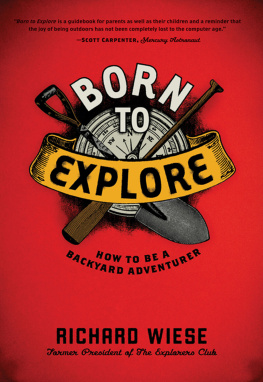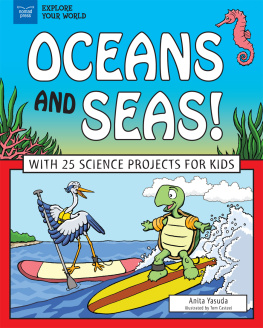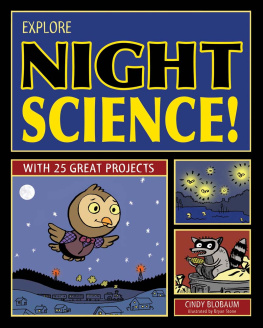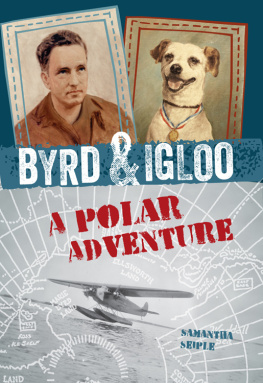Julio Aguilar, professional alligator and snake wrangler
Ed Anderson, Beretta USA
Franco Gussalli Beretta, Beretta USA
Borden Radio Company
Boy Scouts of America
Wildman Steve Brill, edible plant expert
Martin Buser, four-time Iditarod winner
Kim A. Cabrera, educator, tracker
Kathy Chaponton, chef
Joe Conlon, Spectrum Brands-Cutter Insect repellants
Paul Cormack, PCLIX
Jim Fowler, animal expert and TV personality
David A. Francko, assistant vice president for academic affairs and dean of the graduate school of the University of Alabama
Lisa Hacken, editor
Mark Hemming, photographer
Blake Holl, boat-building assistant
Rich Hilsinger, director of the Wooden Boat School in Brooklin, Maine
Hunter Public Relations
Stefani Jackenthal, researcher and editor
Sam Javanrouh, photographer
Kirk Johnson, chief curator at the Denver Museum of Science
Lloyd Kaufman, professor emeritus at NYU
Sean Lambert, researcher
Charles Lanza, crab expert
Dr. Richard Lanza, MIT department of nuclear engineering
Nina Lanza, planetary geologist
Wyatt Lawrence, boat builder
Brian Lang, University of New Hampshire
John Loret, explorer
Leah Lyon, outdoor chef
Christopher Mangun, researcher
Jim Mason, Buck Knives
Del Morris, tracker
William Needham, Hikers Notebook
Bryan Norcross, meteorologist
Oleg Novikov, photographer
Ben C. Oppenheimer, curator of astronomy, American Museum of Natural History
Porters and Guides of Mt. Kilimanjaro
Mathew Pittman, Snow maker
Chris Roddick, curator, the Brooklyn Botanical Garden
Sue Purvis, survival expert
Jim Reid, outdoor spokesman, Coleman
Steve Resler, research diver
Lorie Roach, outdoor chef
Paul Schurke, arctic survival expert
Ian Scott, GSI Outdoors
Stephanie Shore, researcher
Robert Smith, boat-building assistant
Michael Smith, boat-building assistant
Tina Smith, tracker
Josh Schneider, director, Wollemi Pine North America
Carl Sommers, writer, New York Times
Nicole Young, researcher, editor, and cheerleader
Richard Wiese senior, celestial navigator
E. O. Wilson, zoologist, Harvard University
Richard Wilson, physicist
Inspired by the giant redwood cross section at the American Museum of Natural History
Inspired by the Great Hall of Dinosaurs at the American Museum of Natural History, New York City.
The creative people of Africa for all the neat things that they make and recycle
My imaginary friend who taught me about rainbows, whom I have not seen in years
The wilderness has been my playground ever since my mother told my brothers and me to quit roughhousing and go outside and play. We went outside and began to climb trees, take hikes, and ascend hills. To me, wandering in the great outdoors is as natural as breathing.
On my first real mountain, the Tootha fang of rock that sticks out of a jawbone ridge in the Cascade MountainsI was absolutely terrified of the height. I made a vow that if I got off the mountain alive, I would never climb again. Needless to say, I broke that promise and a fascinating new world was revealed to me.
Throughout my life I have been drawn forcefully to the outdoors, to the forests and mountains, seacoasts and oceans, drawn by both a conscious delight in the grandeur and diversity of the planet and an unconscious spiritual yearning to be in the natural world. It is in the wild placesin the damp, clean air of an ancient forest, on a heaving ocean in unpredictable winds, on a snowy summit at the top of the worldthat I enter my own personal cathedral.
When I met Richard Wiese while he was president of the Explorers Club in New York, I found a kindred spirit. He, too, is intimately familiar with wild placesthe wonders and beauty to be found in the depths of a forest, on a river, on a beach, in high alpine country amid the snow, ice, and rocks, and on the oceans that connect us all.
Richards book, Born to Explore , is not only a story about adventure and how to survive while exploring the wonders of the great outdoors, but also about exploration and how to find nature everywhere and at any time. He has written this book with fun projects that will immediately get your imagination soaring and have you thinking like an explorer.
Of concern to all explorers are the basic questions of food, shelter, weather, and navigation. Richard deals with all these issues in a modern and unique way. He not only has information on Starting a Fire without a Match, but also includes chapters on how to use the Miracle Material: Duct Tape for just about everything, along with other fascinating projects that will have you counting the minutes till you can get outdoors.
The knowledge gained from this book can give you what is needed to go places that are still waiting for the first human footprint or to make discoveries that you never thought possible in your own backyard.
Those who have lived the adventurous life know that the benefits are many. It is a healthy, vigorous lifestyle that promotes physical and mental well-being. Wilderness experiences can be the seed of positive growth for many individuals. Practical knowledge of the outdoors enables one to feel comfortable while enjoying its beauty and the transformative journeys waiting for all. That is exactly what this book delivers.
Another long-term benefit is what this book can do for our planet. If we can get young adults into the natural worldNo Child Left Insidethey will learn to love it. When they love it, they will want to take care of it, to preserve it. They will want to pass this magical planet on to the next generation, and the next generation, and on and on.
Richards book, Born to Explore , can help make this happen.
Jim Whittaker
First American to summit Mount Everest














